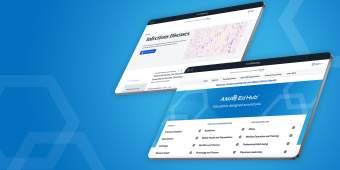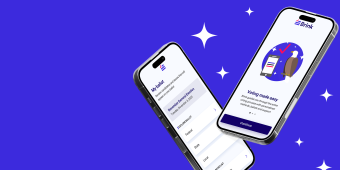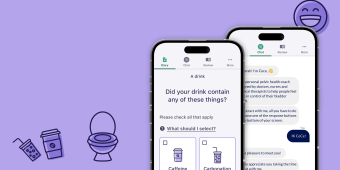Work toward speed to value, not speed to market

Most companies are created to deliver a product or service, and then they’re built up to manage their operations at scale. This approach isn’t as pragmatic as you might think, as it misses opportunities to create new value for customers and for the company.
To help companies realize their products' ultimate potential, we developed an approach that's focused on building value as much as it is building custom software.
Rather than pushing to ship minimum viable products (MVPs) out as fast as possible, we aim to deliver products that continuously improve over time and help create new value––social, economic, or both––for our clients and their end-users.
To help you understand how you can do this at your own organization, let’s dive into the idea of “speed to value” and why adopting an approach informed by design thinking yields more value than traditional Agile development strategies.
Work toward the outcome you need rather than the production of a single solution
It’s not unusual to seek out the help of a custom software shop when you have a custom software need––it’s normal and wise to come to that search with a budget in mind.
But rather than asking whether they can build the product you’re looking for on the schedule and budget you need, we encourage you to start with a different question: What’s the best way to spend our budget to get the long-term outcomes we need?
Rather than focusing on getting an MVP out the door to beat the competition to market, begin by figuring out if it's even the right thing to build.
To frame this another way, instead of diving into a standard Agile process around a preconceived idea for how the application will look or work, articulate what change or impact you're looking to generate: "we're endeavoring to build this product, but to what end?"
Then, take the time to engage in a product innovation process to figure out the best path(s) to that desired outcome.
Remember: Designing an output is a different process from designing an outcome, and ultimately, the outcome is where the maximum value for your company and end users is.
Engage in the product innovation process, not a race to product-market fit
Say there are two groups who’ve been asked to deliver a project that addresses issues with the American energy grid. Imagine you asked them how they plan to do this.
The first group says, "We have $70,000 to build a mobile app that tracks outages on the grid."
The second group presents an inspiring multi-year vision to solve the most complex challenges holding back America's energy grid transformation.
The first group is probably looking for a team of engineers that will build the app they already have in mind. The second is ready to engage with a product innovation team and leverage design thinking to arrive at the long-term outcome they’re committed to.
This example highlights the fact that big questions may have many answers, and there is no single path toward the outcome you’re looking for. So, rather than investing in a short-term solution to an immediate need (like the ability to track grid outages on a national scale), take the time to explore different answers to your biggest questions and you’ll arrive at the outcome you need faster in the long term.
Why?
The truth is that it takes longer (and often costs more) to achieve the right outcome when you force the "wrong" concept through the Agile process.
Ultimately, tweaking the wrong application toward a better outcome in two-week sprints is costly and isn’t necessarily ever going to help you achieve the outcome you’re hoping for.
Investing in research, ideation, rapid prototyping, and definition before leaping to a software solution will get you closer (and more confidently) to the outcome—and value—you want to create.
Put users and research first
We can’t say enough about the importance of doing user research and testing and shaping concepts before diving into production.
If you think you know what you want to build and you just need someone to build it to prove your thesis, it’s not hard to find software engineers who can take a wireframe and turn it into a functioning website or application.
But unless you fully understand the problem space and know with certainty your product is solving a genuine user need, there's a good chance you're spending tens of thousands to commission a product no one will use—a realization costing you time, money, and even brand equity.
To put it another way: focus on traction, then features.
By engaging in the product innovation process instead of focusing on how to get your MVP out the door, you can solve the problems your users are most concerned with and drive more value for them and your organization for the long term.
Design thinking will steer you toward lasting value creation for your organization and end-users
The Agile process is great for prioritizing and building quickly, but it isn’t designed to produce innovative solutions.
Applying methodologies like the double diamond framework and the six principles for working differently, you can identify the “right” product, build it and iterate on it until you achieve the outcome you want, rather than working backward from an output rushed to market without validation.
If you’re curious to hear more about how we do this at TXI, start a conversation with our team of expert practitioners today.
Published by Antonio Garcia in Product Innovation

Let's shape your insights into experience-led data products together.


